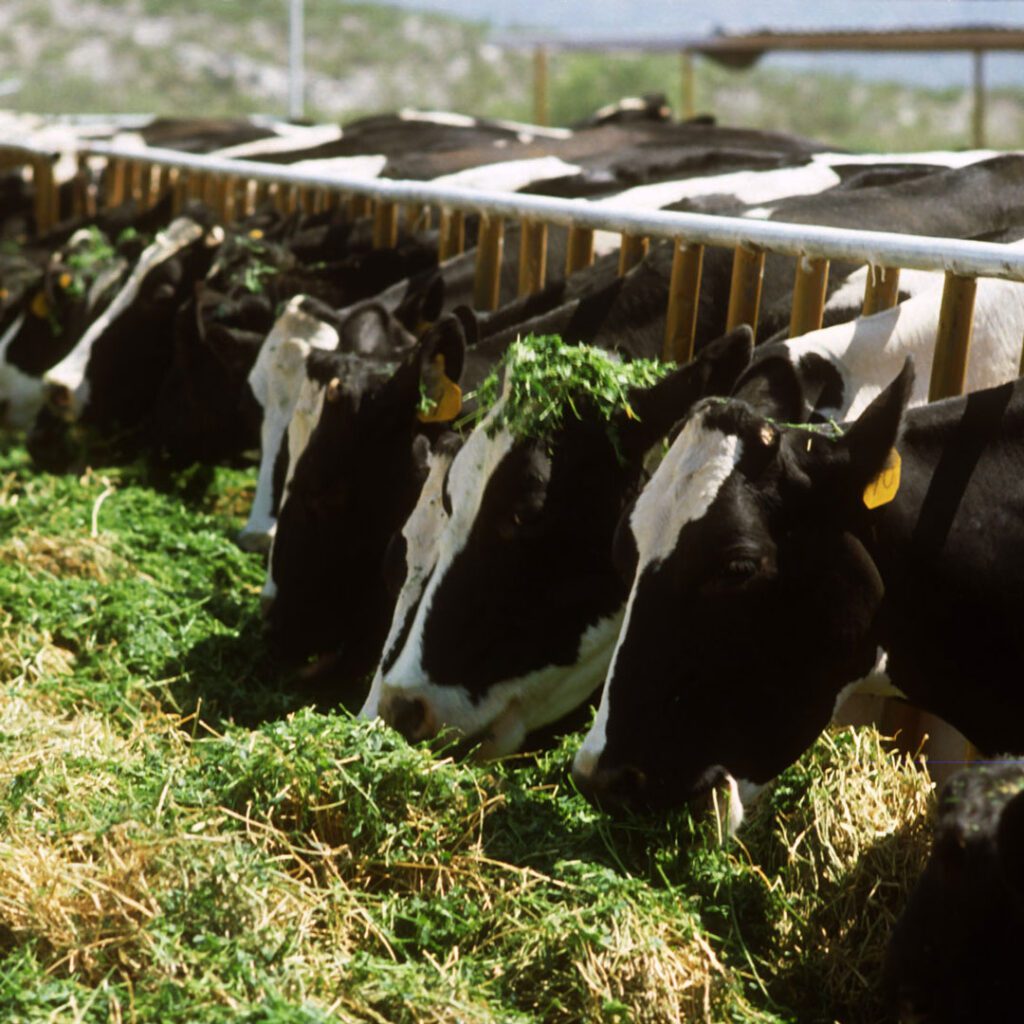Share this page
Nutrient flows and associated environmental impacts - guidelines for assessment in livestock supply chains
Better understanding of the efficiency of nutrient flows and use and associated environmental impacts to improve environmental performance of livestock supply chains.


Alignment with SDGs
AUTHOR
Livestock Environmental Assessment and Performance Partnership Food and Agriculture Organization of the United Nations • Global
Abstract
The assessment of nutrient flows in different stages of livestock supply chains, including dairy, and their associated environmental impacts is challenging due to the rapid transformation of the livestock sector and the lack of harmonized scientific method. The lack of a harmonized method can complicate the benchmarking and monitoring of the nutrient use efficiency, thus resulting in wrong decision-making. For instance, there are large discrepancies in the nitrogen excretion factors by animals used by European Union countries to report the nutrient use performance.
Conscious of these challenges, the LEAP Partnership established in 2016 a Technical Advisory Group (TAG) to develop comprehensive guidelines for the quantification of nutrient flows and associated environmental impacts in the livestock supply chains. Through consensus building, TAG experts from all regions of the world developed the guidelines, which strive for alignment with international standards such as ISO 14040/44, IPCC guidelines and other international guidance.
The aim of the methodology developed in these guidelines is to introduce a harmonized international approach assessing nutrient flows and impact assessment for eutrophication and acidification for livestock supply chains taking the specificity of the various production systems involved into consideration. The guidelines cover all major livestock systems including cattle and buffalo dairy systems.
Moving the wheel
The nutrient technical advisory group (TAG) of the LEAP Partnership was formed in April 2016. The core group included 38 experts in animal sciences, crop sciences, soil sciences, life cycle assessment, environmental science, and livestock production systems. Their backgrounds, complementary between systems and regions, allowed them to understand and address different perspectives.
The role of the TAG was to:
- develop guidelines to quantify nutrient flows in livestock supply chains;
- develop guidelines to quantify the environmental impact of eutrophication and acidification;
- select the relevant indicators to understand the nutrient use and associated environmental impacts in livestock supply chains.
The guidelines gain strength because they represent a multi-actor coordinated cross-sectoral and international effort to harmonize assessment approaches. Ideally, the harmonization leads to greater understanding, transparent application and communication of metrics, and, not least, real and measurable improvement in environmental performance.
This guidance is relevant to a wide array of livestock stakeholders including the members of LEAP (governments, IDF and other private sector associations, NGOs/CSOs) and more broadly:
- livestock producers such as dairy farmers who wish to develop inventories of their nutrient use and to have the environmental performance of their production systems assessed;
- supply chain partners such as feed processors, livestock farming organizations, processors of animal products, as well as retailers pursuing a better understanding of the environmental performance of their production processes;
- policy makers interested in developing nutrient use accounting and reporting specifications for livestock supply chains.
These guidelines introduce a harmonized international approach of assessing nutrient flows and impact assessment for eutrophication and acidification for livestock supply chains taking the specificity of the various production systems involved into consideration. The guidelines cover all major livestock systems including cattle and buffalo dairy systems.
History of success
The benefits of these guidelines include:
- use of recognized, robust and transparent methodology developed to take account of the specificity of nutrient use in contrasting production systems;
- identification of nutrient loss hotspots and opportunities to improve supply chain performance and to reduce environmental impacts;
- identification of opportunities to increase efficiency and productivity;
- ability to benchmark performance internally or against industry or government standards; supporting reporting and communication requirements;
- and raising awareness and supporting action on environmental sustainability.
New opportunities
This document is not intended to remain static. It will be updated and improved as the sector evolves and more stakeholders become involved in LEAP, and as new methodological frameworks and data become available.
LEAP, through its work programme from 2019 to 2021, will consolidate the current guidance through road testing and dissemination of the guidelines and development of tools in support of guideline application and uptake.
More information
can be found on the Guidelines – Version 1 and Factsheet






